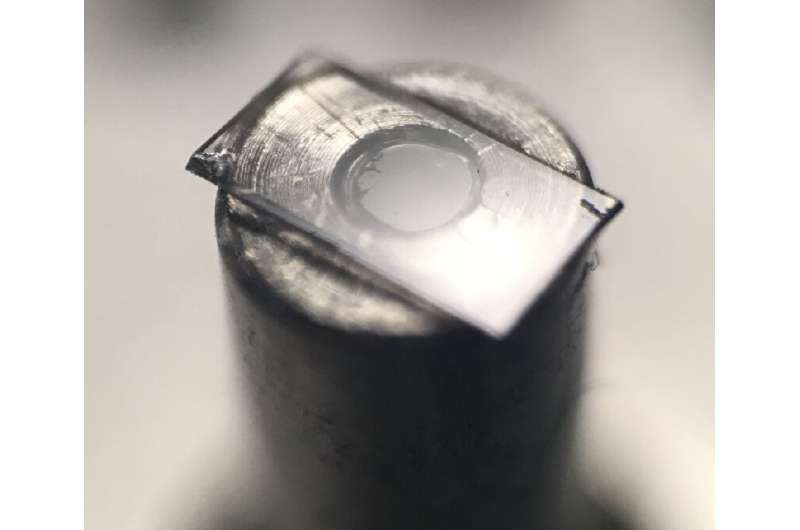Spinning diamond. A small slab of diamond is mounted on a motor shaft that can rotate at 200,000 rpm. Probing a single quantum spin within the crystal revealed the influence of the rotation on the spin. Credit: A. Wood/Univ. of Melbourne
A team of researchers at the University of Melbourne has succeeded in measuring a single quantum spin in a rapidly rotating object for the first time. In their paper published in the journal Physical Review Letters, the group describes how they carried off the difficult feat and ways that their findings might be applied.
In physics, spin is defined as the quantized intrinsic angular momentum of a particle—it is not related to the physical spin of the particle. But in prior work, physicists have theorized that physically spinning a particle should force a change in its spin state. In this new effort, the researchers have proven that theory by carrying out a complicated experiment.
Testing whether spinning a particle changes its spin required overcoming two major hurdles: how to make sure that any changes in spin were due to the particle being spun versus other environmental factors, and how to measure the spin of a particle that is physically spinning.
The exercise involved first mounting a thin slice of a special kind of diamond with nitrogen vacancies (NVs) to a base that could be spun at 200,000 rpm. NVs are instances of nitrogen atoms within the carbon lattice adjacent to a vacancy. In such cases, an atom is left unpaired, which means it interacts with other atoms around it—resulting in an isolated spin. With the test diamond, the NVs were sparse, making it possible to test the spin state in isolation.
To study a particular NV as it was spun, the researchers applied different kinds of light—a green light pulse put the spin in a lower energy state and then a microwave pulse was fired at the particle. By measuring the fluorescence emitted, the team was able to confirm that the spin had changed due to the rotation of the diamond, proving the theory correct.
Scientists have been waiting for the theory to be proven, because the phenomenon could lead to the development of devices for detecting rotation at a very small scale, such as in cells or biological fluids.
More information: A. A. Wood et al. Observation of a Quantum Phase from Classical Rotation of a Single Spin, Physical Review Letters (2020). DOI: 10.1103/PhysRevLett.124.020401
Journal information: Physical Review Letters
© 2020 Science X Network























